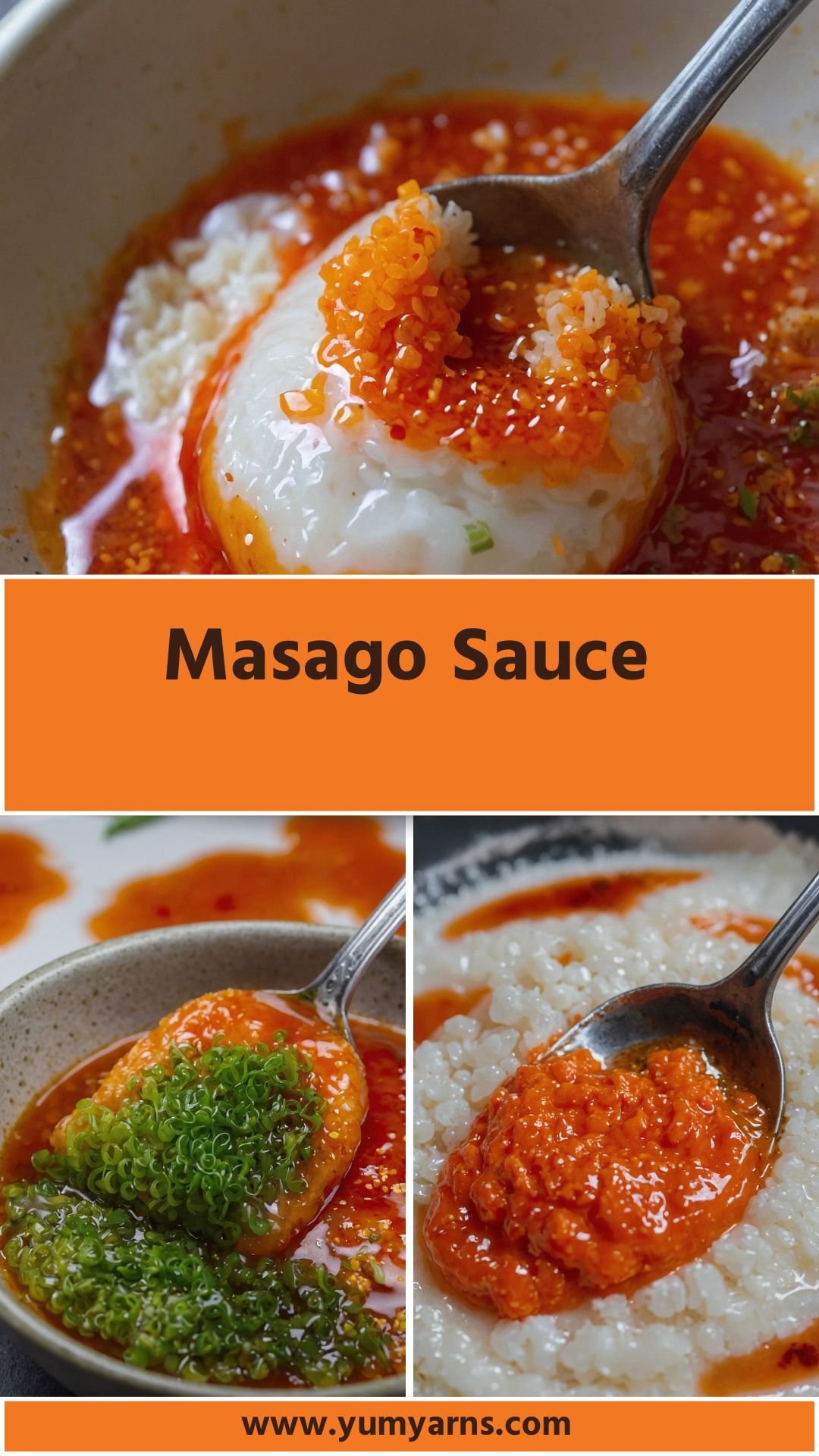As a food enthusiast, there’s little I enjoy more than blending different flavors to create delicious sauces. One of my latest discoveries is masago sauce. It’s a simple yet delectable addition that can elevate an array of dishes. I first encountered this sauce while enjoying an exquisite sushi platter at a trendy restaurant, where it was served alongside spicy tuna rolls. I knew I had to try making it myself.
Texturally, it added a unique crunch that perfectly complemented the creaminess of the mayo. Trust me when I say this sauce is worth trying at home. Today, I want to guide you through understanding masago sauce and how to make it from scratch.
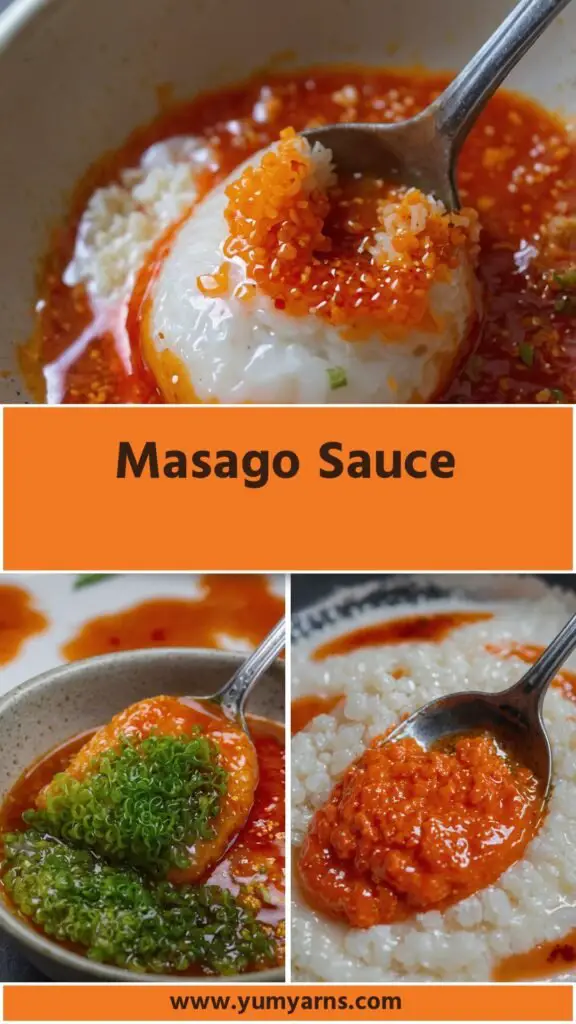
What is Masago Sauce?
Masago sauce features masago, or capelin roe, as its star ingredient. The eggs bring a briny, oceanic flavor, and a delightful popping texture. Masago is often used in Japanese cuisine, especially in sushi. When combined with mayo and a symphony of other ingredients, it transforms into a sauce versatile enough for various dishes.
You will also like the following Sauce recipes!
- El Pollo Loco Tropical Habanero Sauce
- Pollo Tropical Chipotle Mayo
- Copycat Pollo Tropical Guava Bbq Sauce
The Ingredients
Before diving into the recipe, let’s talk about ingredients. This sauce is simple and requires a few pantry staples. Here’s what you’ll need:
- 2 teaspoons fresh masago fish roe
- 2 tablespoons Kewpie mayo (or your preferred mayonnaise)
- ½ teaspoon toasted sesame oil (adds a delicate touch)
- Juice of ½ a fresh lime
- 2 tablespoons Huy Fong Sriracha chili sauce
- 1 teaspoon finely grated ginger (for that zesty kick)
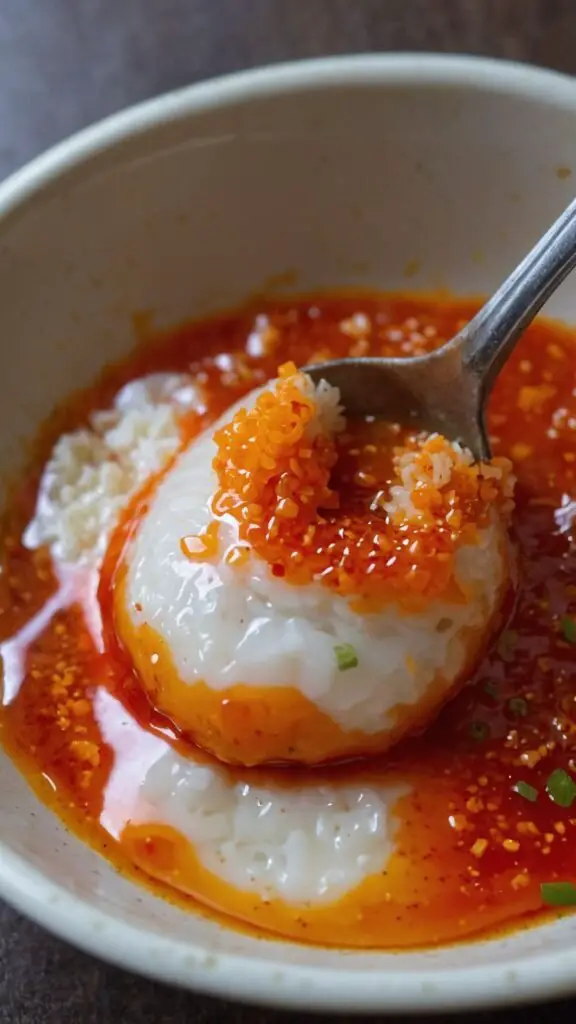
How to Make Masago Sauce?
Making masago sauce transforms quick kitchen moments into delicious masterpieces. The process is straightforward, and with the right ingredients, you’ll whip up this sauce in no time. Let’s break it down step-by-step.
Step 1: Gather Ingredients
Start by assembling all your ingredients. Place everything on a clean countertop. Having everything laid out makes the process smoother. Plus, it creates a sense of excitement as you prepare to cook.
Step 2: Prep the Base
In a mixing bowl, add two tablespoons of Kewpie mayo. This Japanese mayonnaise offers a creamier texture and a slight sweetness that sets it apart from regular mayo. If Kewpie isn’t available, feel free to use your favorite mayonnaise.
Step 3: Add the Masago
Next, gently fold in two teaspoons of fresh masago roe. The aroma is unique. Don’t overpower the mayo; instead, give it a delicate mix. You want the masago to be evenly distributed throughout the sauce.
Step 4: Infuse Flavor
Now, it’s time to add your flavors. Squeeze the juice of half a fresh lime into the mix. The acidity brightens the sauce and balances the richness of the mayo. Then, drizzle in half a teaspoon of toasted sesame oil. It should be a gentle drizzle—too much could overpower the other flavors.
Step 5: Spice It Up
For a kick, add two tablespoons of Huy Fong Sriracha chili sauce. This sauce is known for its flavor and spice, but adjust it according to your heat preference. Incorporate a teaspoon of finely grated ginger next. This ingredient adds warmth and depth, making your sauce truly special.
Step 6: Mix Thoroughly
Using a whisk or a fork, mix everything together. You’ll know you’re done when the color is consistent, and you can see the tiny flecks of masago. Taste the mixture. Adjust seasoning or spice level as needed, depending on what flavors you want to highlight.
Step 7: Chill
Transfer the sauce to an airtight container and let it chill in the refrigerator for at least 30 minutes. This step allows the flavors to meld beautifully. Trust me; patience pays off here!
Notes
Here are some of my helpful tips to maximize your masago sauce experience:
- Use Fresh Ingredients: Fresh masago offers a better taste. Look for it at Asian grocery stores or good seafood markets.
- Experiment with Heat: If you’re a spice lover, add extra Sriracha. Conversely, consider omitting it for a milder sauce.
- Adjust the Acid: If you’re a lime fan, feel free to increase the amount of lime juice for more brightness.
- Substitute Ingredients: Play with other mayonnaise brands if Kewpie is unavailable, but do choose a creamy and flavorful option.
- Storage Matters: Keep your sauce fresh by using it within a week.
Storage Tips
Masago sauce is easy to store. Keep any leftovers in an airtight container. Store in the refrigerator for up to a week. However, be mindful—flavors might intensify over time.
Nutrition Information
Here’s a quick glance at the nutritional aspects of the masago sauce per serving:
Serving Suggestions
Now that you have your masago sauce, let’s explore how to present it at the table.
- Sushi Rolls: Easily the best pairing. Drizzle it over spicy tuna or salmon rolls for added flavor. The creamy texture perfectly complements the fish.
- Rice Bowls: Use it to top rice bowls filled with veggies and protein. It adds that lovely umami kick you crave.
- Seafood Dishes: Serve with grilled scallops or shrimp. The sauce enhances the seafood’s natural sweetness.
- Veggie Dips: Pair it with fresh veggies for a fun appetizer. The sauce’s creaminess contrasts wonderfully with the crunch of carrots, cucumbers, or bell peppers.
- Pasta Salad: Mix into a pasta salad, especially those with seafood elements. It adds a delightful twist that’ll impress your guests.
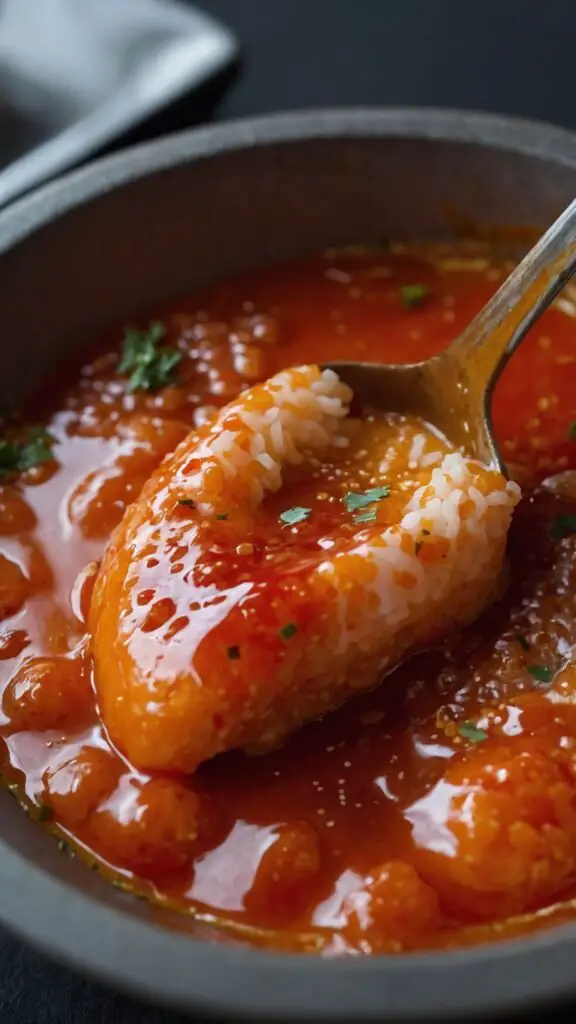
What Other Substitutes Can I Use in Masago Sauce?
If you find yourself missing an ingredient, no worries! Here are some substitutes that work well:
- Tobiko: If masago isn’t available, try tobiko, or flying fish roe, for a similarly delightful texture and flavor.
- Sour Cream: Swap out mayonnaise and use sour cream. It will give the sauce a tangy taste and still keep it creamy.
- Greek Yogurt: For a healthier option, Greek yogurt works. It adds a thicker consistency and a unique flavor profile.
- Hot Sauce: If Sriracha isn’t on hand, you could use any other favorite hot sauce. Just keep in mind the flavor difference.
- Sesame Oil Alternative: If you don’t have toasted sesame oil, regular sesame oil will suffice, but the flavor will be milder.
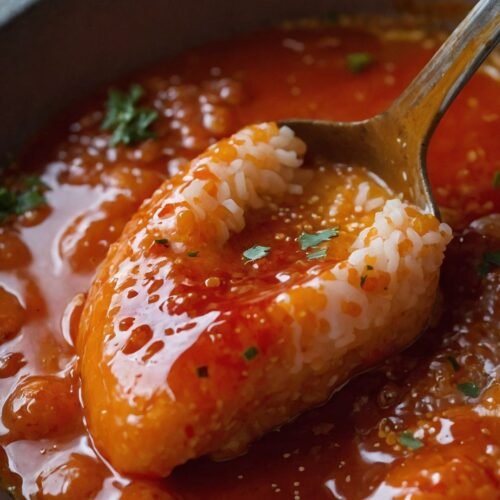
Masago Sauce Recipe
Equipment
- A large mixing bowl
- mayonnaise mixture
Ingredients
- 2 teaspoons fresh masago fish roe
- 2 tablespoons Kewpie mayo
- ½ teaspoon toasted sesame oil
- Juice of ½ a fresh lime
- 2 tablespoons Huy Fong Sriracha chili sauce
- 1 teaspoon finely grated ginger
Instructions
Step 1: Gather Ingredients
- Start by assembling all your ingredients. Place everything on a clean countertop. Having everything laid out makes the process smoother. Plus, it creates a sense of excitement as you prepare to cook.
Step 2: Prep the Base
- In a mixing bowl, add two tablespoons of Kewpie mayo. This Japanese mayonnaise offers a creamier texture and a slight sweetness that sets it apart from regular mayo. If Kewpie isn’t available, feel free to use your favorite mayonnaise.
Step 3: Add the Masago
- Next, gently fold in two teaspoons of fresh masago roe. The aroma is unique. Don’t overpower the mayo; instead, give it a delicate mix. You want the masago to be evenly distributed throughout the sauce.
Step 4: Infuse Flavor
- Now, it’s time to add your flavors. Squeeze the juice of half a fresh lime into the mix. The acidity brightens the sauce and balances the richness of the mayo. Then, drizzle in half a teaspoon of toasted sesame oil. It should be a gentle drizzle—too much could overpower the other flavors.
Step 5: Spice It Up
- For a kick, add two tablespoons of Huy Fong Sriracha chili sauce. This sauce is known for its flavor and spice, but adjust it according to your heat preference. Incorporate a teaspoon of finely grated ginger next. This ingredient adds warmth and depth, making your sauce truly special.
Step 6: Mix Thoroughly
- Using a whisk or a fork, mix everything together. You’ll know you’re done when the color is consistent, and you can see the tiny flecks of masago. Taste the mixture. Adjust seasoning or spice level as needed, depending on what flavors you want to highlight.
Step 7: Chill
- Transfer the sauce to an airtight container and let it chill in the refrigerator for at least 30 minutes. This step allows the flavors to meld beautifully. Trust me; patience pays off here!
Notes
- Use Fresh Ingredients: Fresh masago offers a better taste. Look for it at Asian grocery stores or good seafood markets.
- Experiment with Heat: If you’re a spice lover, add extra Sriracha. Conversely, consider omitting it for a milder sauce.
- Adjust the Acid: If you’re a lime fan, feel free to increase the amount of lime juice for more brightness.
- Substitute Ingredients: Play with other mayonnaise brands if Kewpie is unavailable, but do choose a creamy and flavorful option.
- Storage Matters: Keep your sauce fresh by using it within a week.
Nutrition
Frequently Asked Questions
Can I use frozen masago?
Yes, frozen masago works well too. Just make sure to thaw it properly before mixing it into your sauce.
Is masago sauce gluten-free?
Yes, the ingredients in masago sauce are typically gluten-free. However, ensure your mayonnaise and sriracha meet your dietary needs.
How do I know if masago is fresh?
Fresh masago should have a pleasant sea aroma. If it smells off or has an unusual color, it’s better to avoid it.
Can I add extra ingredients?
Certainly! Feel free to include diced scallions or sesame seeds to elevate the texture and flavor even further.
How can I make this sauce vegan?
To make a vegan version, consider using vegan mayo and replacing the masago with a plant-based caviar for texture.
Conclusion
Masago sauce is a brilliant way to add a twist to your favorite dishes. Its combination of creamy, tangy, and spicy elements gives you an explosion of flavors that enhance seafood, rice dishes, and beyond. Whether you’re whipping it up for a sushi night or throwing together a quick pasta salad, this sauce won’t disappoint. Give it a try, and watch the smiles appear at the table. Happy cooking!
As an added note, experiment with it in your kitchen. See what combinations excite your palate! Bon appétit!

